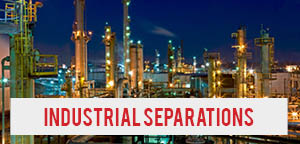Track Categories
The track category is the heading under which your abstract will be reviewed and later published in the conference printed matters if accepted. During the submission process, you will be asked to select one track category for your abstract.
Separation Techniques is an approach to achieve any phenomenon that converts a mixture of chemical substance into two or more distinct product mixtures. Separation techniques plays a major role in almost all industrial process and sectors like petroleum, chemical, pharmaceutical, food technology, biotechnology, mining industries, wastewater management. Separation between constituents can be done by the standard and traditional methods like distillation, sedimentation, drying, absorption and adsorption process. Besides these techniques there are many more newer separation process like membrane filtration, chromatography, spectroscopy, extraction fractionation etc. are gaining our attention in this modern era by accomplishing purified component
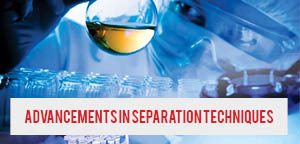
- Track 1-1Novel Separation Techniques in Chemistry
- Track 1-2Novel Separation Techniques in Chemistry
- Track 1-3Separation Techniques in Organic Chemistry
- Track 1-4Separation Techniques in Biochemistry
- Track 1-5Separation Techniques in Mining Industries
- Track 1-6Recent Advances and Development in Mass Spectrometry
Many advanced instruments employ different sample preparation techniques and it’s also specific to each instrument. Separation techniques like chromatography, electrophoresis, need samples which suits the instrument. Discussion on this topic gives the clear knowledge about the sample preparation and it can be used effectively for the analysis.
HPLC Sample Preparation Process
- Track 2-1Advancements in sample preparation techniques
Analytical chemistry is the study deals with instruments and techniques used to determine the product quality and quantity by absolute identification and separation of the materials. Analytical chemistry is the blend of conventional wet lab chemical methods and modern instrumental methods. Separation methods like extraction, fractionation, distillation involved to analyze the quality of the component.
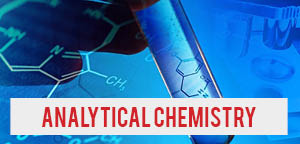
- Track 3-1Analytical Techniques & Instrumentation
The main impact of bionalysis in the pharmaceutical industry is to obtain a quantitative measure of the drug and its metabolites. The purpose is to perform the pharmacokinetics, toxicokinetics, bioequivalence and exposure response like pharmacokinetic/pharmacodynamic studies. Various bioanalytical techniques are performed in bioanalytical studies such as hyphenated techniques, chromatographic techniques, and ligand binding assays. This review extensively highlights the role of bioanalytical techniques and hyphenated instruments in assessing the bioanalysis of the drugs. Many scientific endeavors are dependent upon accurate quantification of drugs and endogenous substances in biological samples; the focus of bioanalysis in the pharmaceutical industry is to provide a quantitative measure of the active drug and/or its metabolite(s) for the purpose of pharmacokinetics, toxicokinetics, bioequivalence and exposure–response (pharmacokinetics/pharmacodynamics studies). Bioanalysis also applies to drugs used for illicit purposes, forensic investigations, anti-doping testing in sports, and environmental concerns. Separation process involved between biomolecules like proteins, amino acids, sugars, cells, tissues, Microorganisms which can separated by using various techniques like electrophoresis, Cytometry, Elucidation are dealt under this topic.
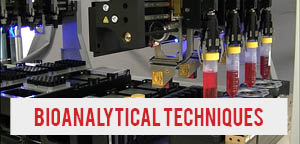

- Track 4-1Bio-separation Techniques
- Track 4-2Novel approaches in protein separation kits
- Track 4-3Advancements in biomarkers & biosensors

- Track 5-1Separation Techniques in Mass Spectrometry
- Track 5-2Applications of Mass Spectrometry
Electrophoresis is a method for separation and analysis of macromolecules (DNA, RNA and proteins) and their fragments, based on their size and charge. It is used in clinical chemistry to separate proteins by charge and/or size (IEF agarose, essentially size independent) and in biochemistry and molecular biology to separate a mixed population of DNA and RNA fragments by length, to estimate the size of DNA and RNA fragments or to separate proteins by charge
Applications of Electrophoresis:
-
Estimation of the size of DNA molecules following restriction enzyme digestion, e.g. in restriction mapping of cloned DNA.
-
Analysis of PCR products, e.g. in molecular genetic diagnosis or genetic fingerprinting
-
Separation of restricted genomic DNA prior to Southern transfer, or of RNA prior to Northern transfer.
Electrophoresis is used in forensics, molecular biology, genetics, microbiology and biochemistry. The results can be analyzed quantitatively by visualizing the gel with UV light and a gel imaging device. The image is recorded with a computer operated camera, and the intensity of the band or spot of interest is measured and compared against standard or markers loaded on the same gel. The measurement and analysis are mostly done with specialized software. Depending on the type of analysis being performed, other techniques are often implemented in conjunction with the results of gel electrophoresis, providing a wide range of field-specific applications.
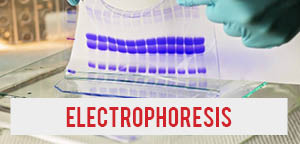
- Track 6-1Protein separation kits & Protein Electrophoresis
Spectroscopy is the study of communication between particles and electromagnetic radiation where it involves scattering, absorption, reflection or transmission of materials. The intensity of interaction between these materials gives the data about the physical properties of the substance. This track deals with various spectroscopy techniques which act as a basic analysis before separation.
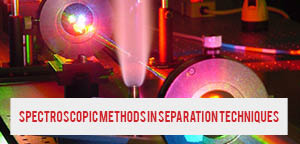
- Track 7-1Advances in optical techniques
- Track 7-2Nuclear magnetic resonance
Hybrid separation techniques or hyphenated techniques is the combination of mass spectrometry and chromatography in which the particles can be detected and then separated accordingly by chromatographic separation technique. The term Hyphenated techniques ranges from the blend of division ID, hyphenated systems, e.g., GC-MS, LC-MS, LC-FTIR, LC-NMR, CE-MS, and so forth. Hyphenated procedures along with chromatographic and ghostly techniques to abuse the benefits of both partition detachment methods. These systems demonstrate specificity and affectability. A Hyphenated system is mix or coupling of two distinctive systematic strategies with the assistance of two legitimate interfaces. Advancements in hybrid separation techniques over the past decade has significant outgrowth which added a new dimension to the separation techniques especially for the analysis of biomaterials.
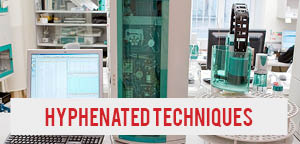
- Track 8-1Applications of hyphenated Separation Techniques
Chromatography is a science of intermolecular interactions and transport molecules or particles in a system of mutually immiscible phases moving relative to each other leading to the formation of concentration zones of individual components of original mixtures of substances or particles. Chromatography is a partition method that each scientific expert is familiar with the technique.
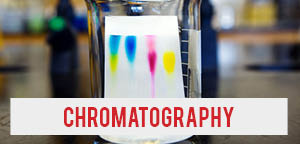
- Track 9-1Chromatography as a separation technique
- Track 9-2New instrumentation and Multidimensional Separations
- Track 9-3Development of innovative gas Separation Techniques
- Track 9-4Advancements in Chromatographic Techniques
- Track 9-5Theoretical researches in chromatography
A separation process is a method that converts a mixture or solution of chemical substances into two or more distinct product mixtures. At least one of results of the separation is enriched in one or more of the source mixture's constituents. In some cases, a separation may fully divide the mixture into pure constituents. Separations exploit differences in chemical properties or physical properties (such as size, shape, mass, density, or chemical affinity) between the constituents of a mixture. A mixture in chemistry is a substance consisting of two or more substances that have been combined or mixed without chemical bonding taking place. In chemistry and chemical engineering, a separation process is used to transform a mixture of substances into two or more distinct products. The separated products could differ in chemical properties or some physical property, such as size, or crystal modification or other separation into different components.
- Track 10-1Separation process in biofuels and bioproducts
Organic chemistry is the study deals with physical and chemical nature of organic materials which contains carbon atoms. Supramolecular chemistry is the study focuses on the chemical system rather than molecules. It deals with the molecular assembly where two or more compounds interact with weak electrostatic to strong covalent bonding provided with electronic coupling between molecules. This track deals with the separation techniques involved in organic chemistry
Inorganic analysis is a classification of analytical chemistry which used to find composition of inorganic materials. Detecting and separation of ions from other compounds. Supramolecular chemistry is the study focuses on the chemical system rather than molecules. It deals with the molecular assembly where two or more compounds interact with weak electrostatic to strong covalent bonding provided with electronic coupling between molecules.
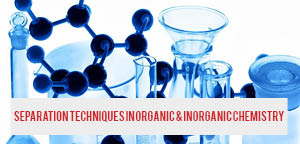
- Track 11-1Separations in Inorganic Chemistry
Separation and purification techniques is an important aspect in this modern era. It involved in separation and purification of homogenous and heterogenous mixtures to its purest form. Separation is the segregation of different types of solid waste at the location where they are generated (a household or business). The most common reason for separating wastes at the source is for recycling. To reduce the environmental impact of waste disposal, the Environmental Protection Agency (EPA) encourages communities to develop strategies to decrease landfill use and lower the risks and inefficiencies of incineration. Waste reduction and recycling are the most environmentally beneficial methods to manage waste. Increasing concentrations of greenhouse gases (GHGs) such as CO2 in the atmosphere is a global warming. Human activities are a major cause of increased CO2 concentration in the atmosphere, as in recent decades, two-thirds of the greenhouse effect was caused by human activities. Carbon capture and storage (CCS) is a major strategy that can be used to reduce GHG emissions. There has been an accompanying increase in interest in the academic community in environmental issues and research on ways to treat environmental problems. Separations could be used to concentrate contaminants for eventual destruction or immobilization and to remove contaminants and concentrate or purify them to the point where they can be used again and no longer be considered contaminants. Applications of separation methods are expected to increase as efforts are made to reduce waste volumes, reuse contaminants in inlet streams even further, or to remove containments from soils and groundwater. Separation operations are currently important in almost every aspect of waste and environmental treatment. This track deals with techniques involved in separation and purification in various fields like green chemistry, radiology, containments of environment and instrumentation of the technique.

- Track 12-1Environmental Geology
- Track 12-2Mineralogy
- Track 12-3Mining Science
- Track 12-4Separation Techniques in Environmental chemistry
- Track 12-5Separation process inherited for biodegradable / non-biodegradable materials
- Track 12-6Environmental Health
- Track 12-7Separation of greenhouse gases from dilute emissions
- Track 12-8Novel Separation Techniques used in environmental Geo chemistry
Green chemistry, also called sustainable chemistry, is an area of chemistry and chemical engineering focused on the designing of products and processes that minimize the use and generation of hazardous substances.Whereas environmental chemistry focuses on the effects of polluting chemicals on nature, green chemistry focuses on the environmental impact of chemistry, including technological approaches to preventing pollution and reducing consumption of nonrenewable resources. Separation Techniques plays a major role in Green Chemistry by employing various methods like removal, recycle, separating hazardous elements, analysis, operating for the welfare of the society and environment
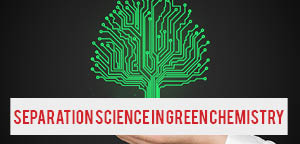
- Biopolymer formed by Polynucleotides (RNA & DNA) which is composed of nucleotide monomers.
- Biopolymer formed by polypeptides which is made up of short polymers of amino acids.
- Biopolymers made up of polysaccharides which is nothing but polymeric carbohydrate structures.
Biopolymer plays a key role in our environment as it’s an alternative for traditional polymeric substances, the main advantage of biopolymers are they are biodegradable. Biopolymers contain monomeric units that are covalently bonded to form larger structures. There are three main classes of biopolymers, classified according to the monomeric units used and the structure of the biopolymer formed: polynucleotides (RNA and DNA), which are long polymers composed of 13 or more nucleotide monomers; polypeptides, which are short polymers of amino acids; and polysaccharides, which are often linear bonded polymeric carbohydrate structures. Other examples of biopolymers include rubber, suberin, melanin and lignin.
- Chemical modification of thermoplastics by reactive extrusion
- Recycling of thermoplastics
- Filling and reinforcing of thermoplastics
- Biodegradable polymer compositions with the use of raw materials of natural origin
- Polymer nanocomposites
- Modification and processing of engineering polymers, including PPO
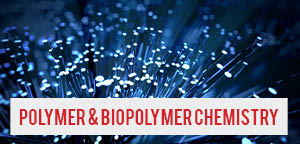
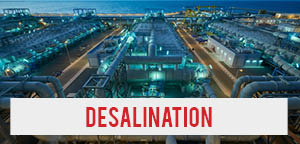
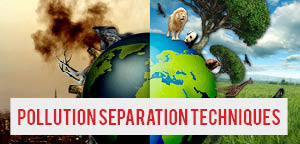
- Track 16-1Waste Management
- Track 16-2Environmental Management
- Track 16-3Pollution Reduction
- Track 16-4Pollution Prevention
- Track 16-5Eco-friendly Practices
- Track 16-6Wastewater engineering
- Track 16-7Wastewater Treatment and Purification Techniques
- Track 16-8Separation of greenhouse gases
- Track 16-9Advances in co2 reduction and carbon cycle
- Track 16-10Industrial wastewater techniques
- Track 16-11Sewage water treatment techniques
- Track 16-12Grey water treatment techniques
- Track 16-13Novel Wastewater Treatment Technologies
Membrane Separation is an innovation which specifically isolates (fractionates) materials by means of pores as well as moment holes in the sub-atomic course of action of a nonstop structure. Layer detachments are characterized by pore size and by the division driving force. Membrane separation is a technique that separate solvent and solute particles with help of semi permeable membranes. Membrane innovation is a non-specific term for various extraordinary, exceptionally trademark partition forms. These procedures are of a similar kind, in light of the fact that in each of them a film is utilized. Membrane films are utilized frequently for the purification of groundwater, surface-water, and wastewater. Recent advances in membrane separation technology attained a new dimension in this era.
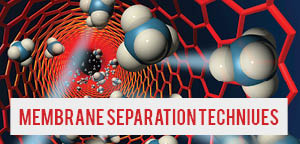
Innovations in separation science for improved sensitivity and cost-efficiency, increased speed, higher sample throughput and lower solvent consumption in the assessment, evaluation, and validation of emerging drug compounds. It investigates breakthroughs in sample pretreatment, HPLC, mass spectrometry, capillary electrophoresis and therapeutic drug monitoring for improved productivity, precision, and safety in clinical chemistry, biomedical analysis, and forensic research. The most common instrumental chromatographic method used in the clinical laboratory is the gas-liquid chromatography. Separation Techniques in Clinical Chemistry is a thorough single-source guide for analytical, organic, pharmaceutical, medicinal, physical, surface, and colloid chemists and biochemists; and upper-level undergraduate and graduate students in these disciplines. Four detection methods commonly used with gas chromatography are thermal conductivity, flame ionization, nitrogen/phosphorous, and mass spectrometry. The thermal conductivity detector takes advantage of variations in thermal conductivity between the carrier gas and the gas being measured. Advances in Chromatographic Techniques for Therapeutic Drug Monitoring is a comprehensive reference describing the theory and application of therapeutic drug monitoring in clinical laboratories. The technological innovations in clinical chemistry analyzers have led to early disease detection and specialized diagnosis in the areas of oncology, gynecology, & endocrinology and enabled testing on a larger scale. The advancements comprise advanced modeling & parameter estimation, better resolution, improved pattern recognition, computer-assisted interpretation, and artificial intelligence. This Track confers about the information about the separations in clinical chemistry.

In chemical engineering sector separation process is the transfer of mass substance into two or more distinctive mixtures. This separation process proceeded based on their differences in chemical properties or chemical properties such as size, shape, mass, density or chemical affinity, between the constituents of mixtures. The separation process in chemical engineering is comprised of absorption, adsorption, flotation, fractionation, precipitation, magnetic separation, crystallization, electrochemical separation, drying etc. And Nanotechnology is the emerging field that deals with Nano particles this track confers the information about the separation techniques used in nanotechnology. It is a branch of science that exploring the new dimension in the Nano level which leads into the discovery of new drugs, treatments, user friendly equipment, technologies, etc. This generation is now focusing on the Nano & Pico level experiments & technologies which leads to newer version of science.

- Track 19-1Fractionation & Magnetism as a separation Technique
- Track 19-2Separation Techniques used in Nanotechnology
- Track 19-3Separation Techniques used in Nanotechnology

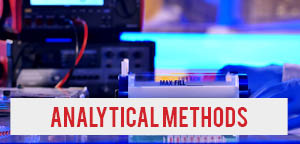
Separation instruments like fractional tapping chromatography, spectrometry, NMR analysis for the separation natural compounds are developing with automated, less time consuming, error free and with a user free fabrication. Advanced ideas like instruments in a chip i.e. lab in a chip (micro fabricated devices) with MEMS technology instruments which are developed with such innovative ideas can be displayed in this discussion.
- Track 21-1Biomarker and Biosensors Analysis - Regulations
Separation Techniques plays a major role in all aspects of our daily life products it became a part and parcel of our environment. Raw materials which is of different forms and phases but can be separated to its purest constituent. The importance of separation techniques of different fields like biotechnology, forensic studies, food technology, pharmaceutical industry, petroleum industries.
- Track 22-1Separation Techniques in Radiochemistry
- Track 22-2Separation Techniques used in Geology / Mineralogy
- Track 22-3Gas separation techniques
- Track 22-4Separation Techniques used in Biotechnology
- Track 22-5Future trends of Separation Techniques
- Track 22-6Recent updates of biosensor & biomarker technologies
- Track 22-7Separation Techniques used in Food Technology

